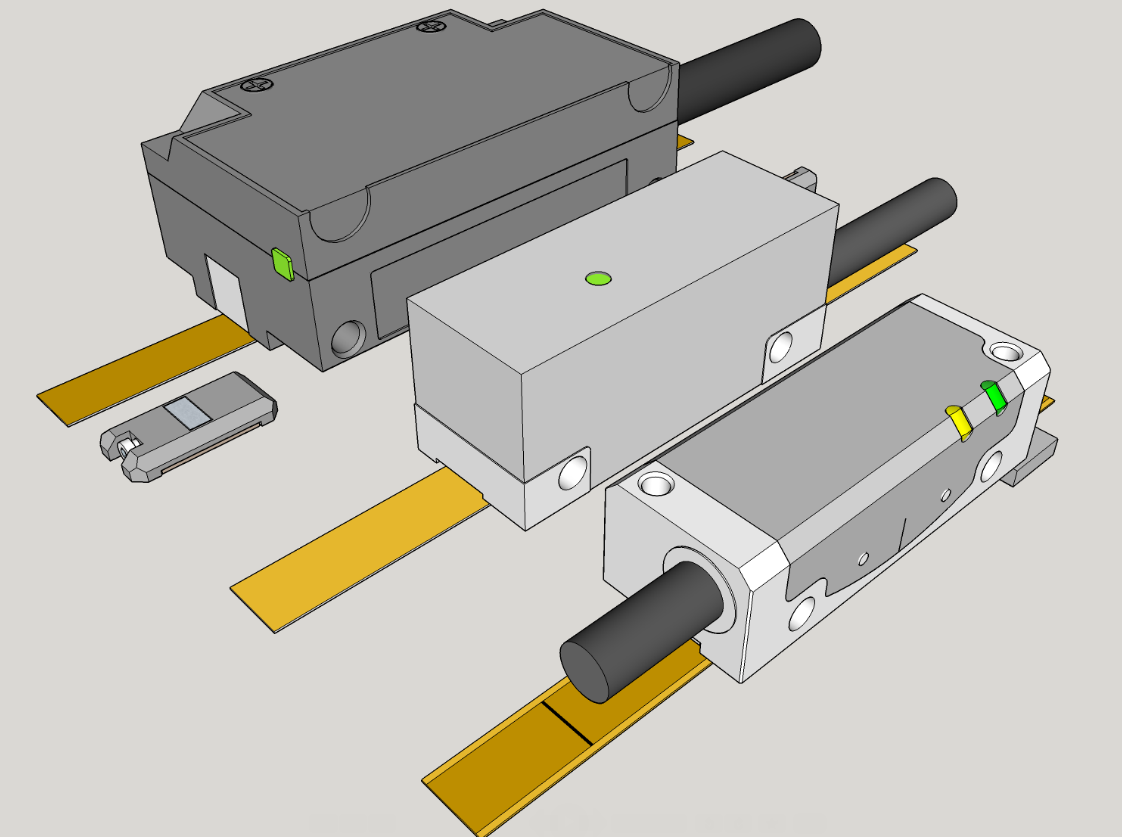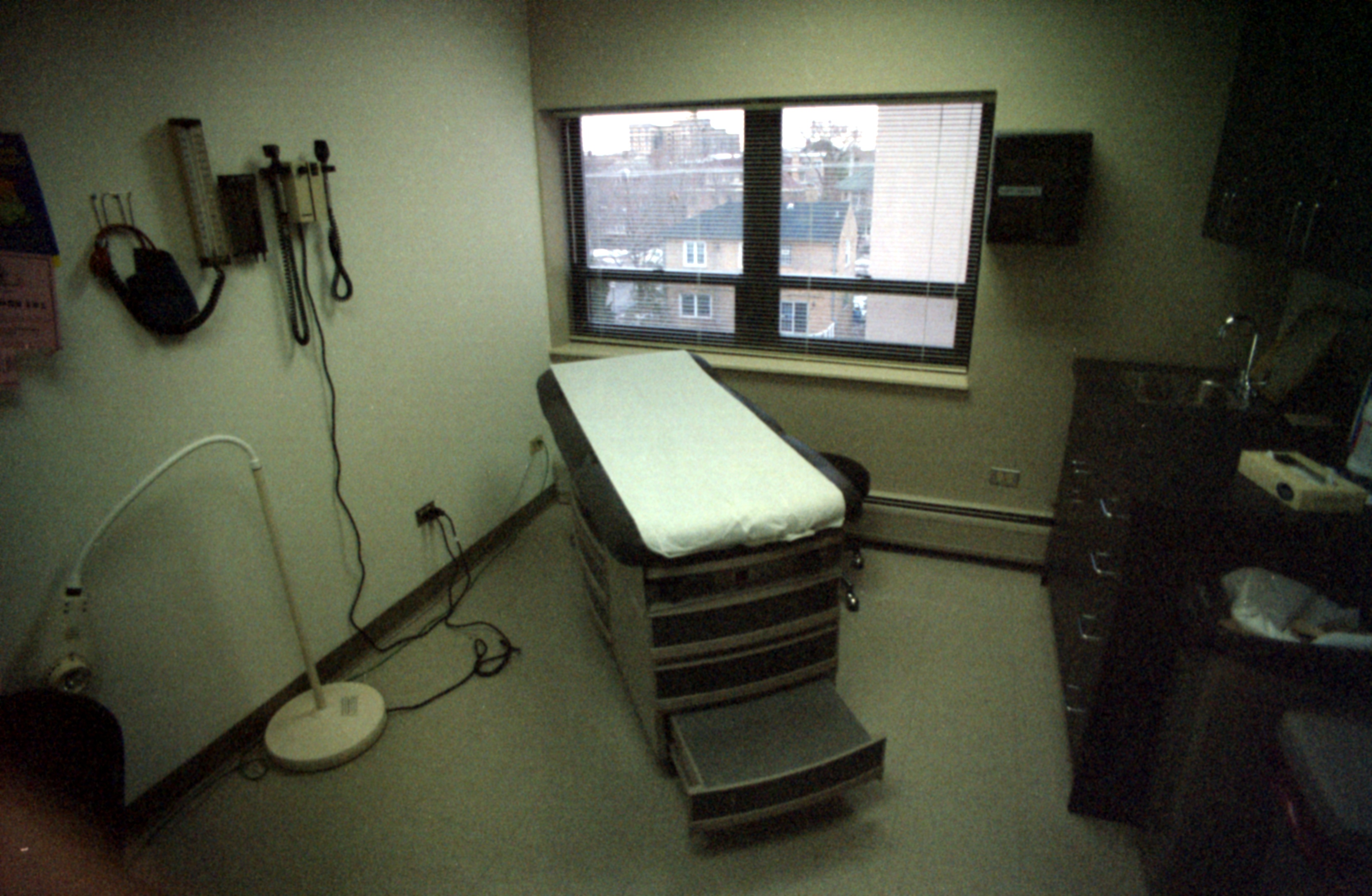|
Height Gauge
A height gauge is a measuring device used for determining the height of objects, and for marking of items to be worked on. These measuring tools are used in metalworking or metrology to either set or measure vertical distances; the pointer is sharpened to allow it to act as a scriber and assist in marking out work pieces. Devices similar in concept, with lower resolutions, are used in health care settings ( health clinics, surgeries) to find the height of people, in which context they are called stadiometers. Height gauges may also be used to measure the height of an object by using the underside of the scriber as the datum. The datum may be permanently fixed or the height gauge may have provision to adjust the scale, this is done by sliding the scale vertically along the body of the height gauge by turning a fine feed screw at the top of the gauge; then with the scriber set to the same level as the base, the scale can be matched to it. This adjustment allows different scribers ... [...More Info...] [...Related Items...] OR: [Wikipedia] [Google] [Baidu] |
Toolroom
Tool and die makers are highly skilled crafters working in the manufacturing industries. Variations on the name include tool maker, toolmaker, die maker, diemaker, mold maker, moldmaker or tool jig and die-maker depending on which area of concentration or industry an individual works in. Tool and die makers work primarily in toolroom environments—sometimes literally in one room but more often in an environment with flexible, semipermeable boundaries from production work. They are skilled artisans (craftspeople) who typically learn their trade through a combination of academic coursework and with substantial period of on-the-job training that is functionally an apprenticeship. They make jigs, fixtures, dies, molds, machine tools, cutting tools, gauges, and other tools used in manufacturing processes. Divisions The main divisions of the tool & die industry include: *Die casting * Dies * Fixtures *Forging * Gauges *Jigs *Metal working * Moulding Job description Traditionally, ... [...More Info...] [...Related Items...] OR: [Wikipedia] [Google] [Baidu] |
Flatness (manufacturing)
In manufacturing and mechanical engineering, flatness is an important geometric condition for workpieces and tools. In the manufacture of precision parts and assemblies, especially where parts will be required to be connected across a surface area in an air-tight or liquid-tight manner, flatness is a critical quality of the manufactured surfaces. Such surfaces are usually machined or ground to achieve the required degree of flatness. High-definition metrology, such as digital holographic interferometry, of such a surface to confirm and ensure that the required degree of flatness has been achieved is a key step in such manufacturing processes. Flatness may be defined in terms of least squares fit to a plane ("statistical flatness"), worst-case or overall flatness (the distance between the two closest parallel planes within). Two parts that are flat to about 1 helium light band (HLB) can be "wrung" together, which means they will cling to each other when placed in contact. ... [...More Info...] [...Related Items...] OR: [Wikipedia] [Google] [Baidu] |
Surface Plate
A surface plate is a solid, flat plate used as the main horizontal reference plane for precision inspection, marking out (layout), and tooling setup. The surface plate is often used as the baseline for all measurements to a workpiece, therefore one primary surface is finished extremely flat with tolerances below per 2960 mm for a grade 0 plate. Surface plates are a common tool in the manufacturing industry and are often fitted with mounting points so that it can be an integrated structural element of a machine such as a coordinate-measuring machine, precision optical assembly, or other high precision scientific & industrial machine. Plates are typically square or rectangular, although they may be cut to any shape. Accuracy and grade There are varying grades used to describe the accuracy of some metrology equipment such as: AA, A, B, and Workshop grade. While workshop grade is the least accurate, all grades of surface plates are held to a high degree of flatness. Surface plates ... [...More Info...] [...Related Items...] OR: [Wikipedia] [Google] [Baidu] |
Linear Encoder
A linear encoder is a sensor, transducer or readhead paired with a scale that encodes position. The sensor reads the scale in order to convert the encoded position into an analog or digital signal, which can then be decoded into position by a digital readout (DRO) or motion controller. The encoder can be either ''incremental'' or ''absolute.'' In an incremental system, position is determined by motion over time; in contrast, in an absolute system, motion is determined by position over time. Linear encoder technologies include optical, magnetic, inductive, capacitive and eddy current. Optical technologies include shadow, self imaging and interferometric. Linear encoders are used in metrology instruments, motion systems, inkjet printers and high precision machining tools ranging from digital calipers and coordinate measuring machines to stages, CNC mills, manufacturing gantry tables and semiconductor steppers. Physical principle Linear encoders are transducers that exploit many di ... [...More Info...] [...Related Items...] OR: [Wikipedia] [Google] [Baidu] |
Dial (measurement)
A dial is generally a flat surface, circular or rectangular, with numbers or similar markings on it, used for displaying the setting or output of a timepiece, radio, clock, watch, or measuring instrument. There are many instruments used in scientific and industrial applications that use dials with pointers as indicators of a specific physical property. Typical examples include pressure and vacuum gauges, fluid-level gauges (for fuel, engine oil, and so on), voltmeters and ammeters, thermometers and hygrometers, speedometers and tachometers, and indicators (distance amplifying instruments). Traditionally these have been mechanical devices, but with the advent of electronic displays, analog dials are often simulated from digital measurements. The term may also refer to a movable control knob used to change the settings of the controlled instrument, for example, to change the frequency of the radio, or the desired temperature on a thermostat. Styles of dials: * Circular, * Fixed ... [...More Info...] [...Related Items...] OR: [Wikipedia] [Google] [Baidu] |
Rack And Pinion
A rack and pinion is a type of linear actuator that comprises a circular gear (the '' pinion'') engaging a linear gear (the ''rack''). Together, they convert rotational motion into linear motion. Rotating the pinion causes the rack to be driven in a line. Conversely, moving the rack linearly will cause the pinion to rotate. A rack and pinion drive can use both straight and helical gears. Though some suggest helical gears are quieter in operation, no hard evidence supports this theory. Helical racks, while being more affordable, have proven to increase side torque on the datums, increasing operating temperature leading to premature wear. Straight racks require a lower driving force and offer increased torque and speed per percentage of gear ratio which allows lower operating temperature and lessens viscal friction and energy use. The maximum force that can be transmitted in a rack and pinion mechanism is determined by the tooth pitch and the size of the pinion as well as the gear ... [...More Info...] [...Related Items...] OR: [Wikipedia] [Google] [Baidu] |
Vernier Scale
A vernier scale, named after Pierre Vernier, is a visual aid to take an accurate measurement reading between two graduation markings on a linear scale by using mechanical interpolation, thereby increasing resolution and reducing measurement uncertainty by using vernier acuity to reduce human estimation error. It may be found on many types of instrument measuring linear or angular quantities, but in particular on a vernier caliper which measures internal or external diameter of hollow cylinders. The vernier is a subsidiary scale replacing a single measured-value pointer, and has for instance ten divisions equal in distance to nine divisions on the main scale. The interpolated reading is obtained by observing which of the vernier scale graduations is coincident with a graduation on the main scale, which is easier to perceive than visual estimation between two points. Such an arrangement can go to a higher resolution by using a higher scale ratio, known as the vernier constant. A ... [...More Info...] [...Related Items...] OR: [Wikipedia] [Google] [Baidu] |
Stadiometer
A stadiometer is a piece of medical equipment used for measuring human height. It is usually constructed out of a ruler and a sliding horizontal headpiece which is adjusted to rest on the top of the head. Stadiometers are used in routine medical examinations and also clinical tests and experiments. Devices with similar concept, although with higher resolutions, are used in industrial metrology applications, where they are called height gauges. See also *Anthropometry References {{Reflist Medical equipment Length, distance, or range measuring devices ... [...More Info...] [...Related Items...] OR: [Wikipedia] [Google] [Baidu] |
Height
Height is measure of vertical distance, either vertical extent (how "tall" something or someone is) or vertical position (how "high" a point is). For example, "The height of that building is 50 m" or "The height of an airplane in-flight is about 10,000 m". For example, "Christopher Columbus is 5 foot 2 inches in vertical height." When the term is used to describe vertical position (of, e.g., an airplane) from sea level, height is more often called ''altitude''. Furthermore, if the point is attached to the Earth (e.g., a mountain peak), then altitude (height above sea level) is called ''elevation''. In a two-dimensional Cartesian space, height is measured along the vertical axis (''y'') between a specific point and another that does not have the same ''y''-value. If both points happen to have the same ''y''-value, then their relative height is zero. In the case of three-dimensional space, height is measured along the vertical ''z'' axis, describing a distance from (or "above") t ... [...More Info...] [...Related Items...] OR: [Wikipedia] [Google] [Baidu] |
Doctor's Office
A doctor's office in American English, a doctor's surgery in British English, or a doctor's practice, is a medical facility in which one or more medical doctors, usually general practitioners (GP), receive and treat patients. Description Doctors' offices are the primary place where ambulatory care is given, and are often the first place that a sick person would go for care, except in an emergency, in which case one would go to an emergency department at a hospital. In developed countries, where health services are guaranteed by the state in some form, most medical visits to doctors take place in their offices. In the United States, where this is not the case, many people who cannot afford health insurance or doctor's visits must either go to free or reduced-cost clinics or an emergency department at a hospital for care, instead of a doctor's office. For healthy people, most visits to doctors' offices revolve around a once-yearly recommended physical examination. This ex ... [...More Info...] [...Related Items...] OR: [Wikipedia] [Google] [Baidu] |
Clinic
A clinic (or outpatient clinic or ambulatory care clinic) is a health facility that is primarily focused on the care of outpatients. Clinics can be privately operated or publicly managed and funded. They typically cover the primary care needs of populations in local communities, in contrast to larger hospitals which offer more specialised treatments and admit inpatients for overnight stays. Most commonly, the English word clinic refers to a general practice, run by one or more general practitioners offering small therapeutic treatments, but it can also mean a specialist clinic. Some clinics retain the name "clinic" even while growing into institutions as large as major hospitals or becoming associated with a hospital or medical school. Etymology The word ''clinic'' derives from Ancient Greek ''klinein'' meaning to slope, lean or recline. Hence ''klinē'' is a couch or bed and ''klinikos'' is a physician who visits his patients in their beds. In Latin, this became ''clī ... [...More Info...] [...Related Items...] OR: [Wikipedia] [Google] [Baidu] |







.jpg)